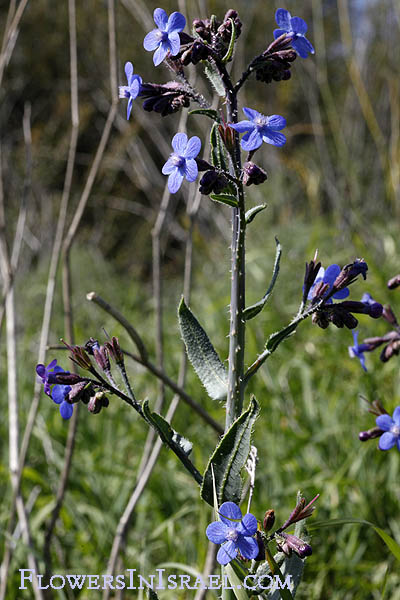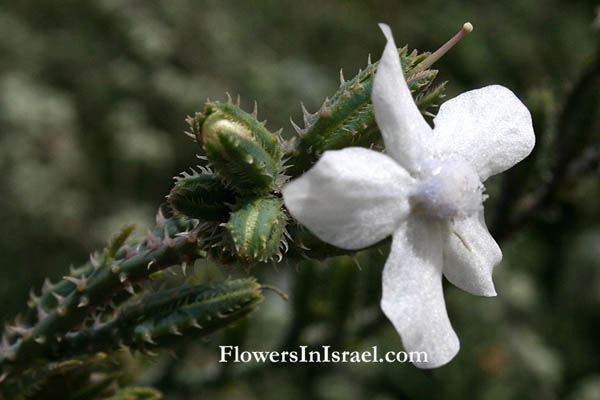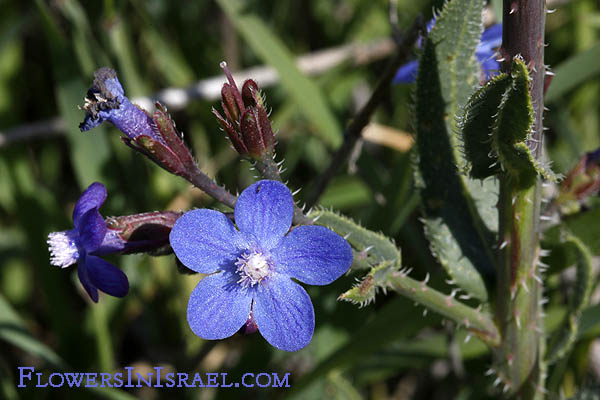Hebrew: לשון-פר סמורה, Arabic: لسان الثور / حمحم
| Scientific name: | Anchusa strigosa Banks et Solander | |
| Common name: | Prickly Alkanet | |
| Hebrew name: | לשון-פר סמורה | |
| Arabic name: | لسان الثور / حمحم | |
| Family: | Boraginaceae, זיפניים |

|
| Life form: | Hemicryptophyte | |
| Spinescence: | Emergences | |
| Stems: | Stout tuberculate-strigose; a few 40-100 cm long stems; very variable as far as the numbers of prickles on the stem is concerned | |
| Leaves: | Alternate, rosette, entire | |
| Flowers: | Light blue, dark blue, white | |
| Fruits / pods: | Nutlets 6-8 x 2-3 mm, oblong, erect | |
| Flowering Period: | March, April, May, June | |
| Habitat: | Batha, Phrygana | |
| Distribution: | Mediterranean Woodlands and Shrublands, Semi-steppe shrublands, Shrub-steppes, Deserts and extreme deserts | |
| Chorotype: | Med - Irano-Turanian | |
| Summer shedding: | Perennating |

Derivation of the botanical name: Anchusa, αγχουσα, a plant used for cosmetic as a rouge. strigosa, striga, a straight rigid close-pressed rather short bristle-like hair; strigosa - covered with strigae, bristled. The Hebrew name: לשון-פר, lashon-par, 'ox-tongue', the leaves have raised spots with short, hooked bristles, giving the leaves a very rough feeling (like an ox’s tongue, hence the name).
See the list of Medicinal herbs in Israel, the parts used and their medical uses to treat various diseases. 

|